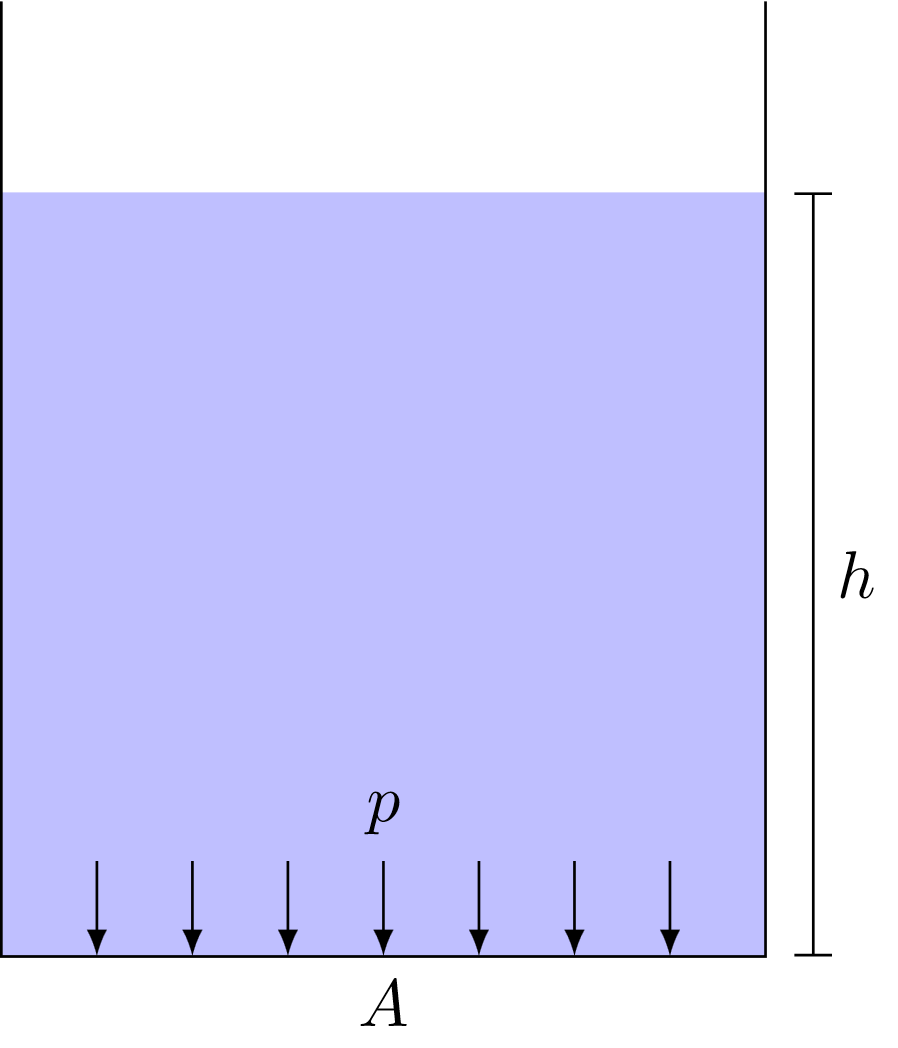Hydrostatic Pressure
We want to calculate now the pressure of an incompressible liquid at a given depth below its surface. For this purpose we assume a volume to be filled with that liquid up to a height $h$ as illustrated in the figure below. The area of the volume is here denoted with $A$. If a volume is filled with water, then the weight on the bottom of this volume is given as $$F_G = mg$$ where $m$ is the mass of the water which can be replaced with the product of its density $\varrho$ and the volume $V$: $$F_G = \varrho V g$$ The volume, however, is equal to the product of the area $A$ and the height of the water level: $$F_G = \varrho A h g$$ Dividing both sides of the equation by $A$ leads to the pressure $p=F/A$ that acts at the bottom of the water volume due to the gravitational force: $$\boxed{p = \varrho g h}$$ Therefore, the pressure only depends on the height and not on the shape of the water volume. This behavior is called the hydrostatical paradox. Hydrostatic Pressure
The hydrostatic pressure of an incompressible liquid is proportional to the depth $h$ below its surface: $$p = \varrho g h$$ Here, $\varrho$ denotes the water density and $g$ the value of the $g$-force.
This page contains 265 words and 1510 characters.
Last modified: 2022-10-01 17:10:58 by mustafa



